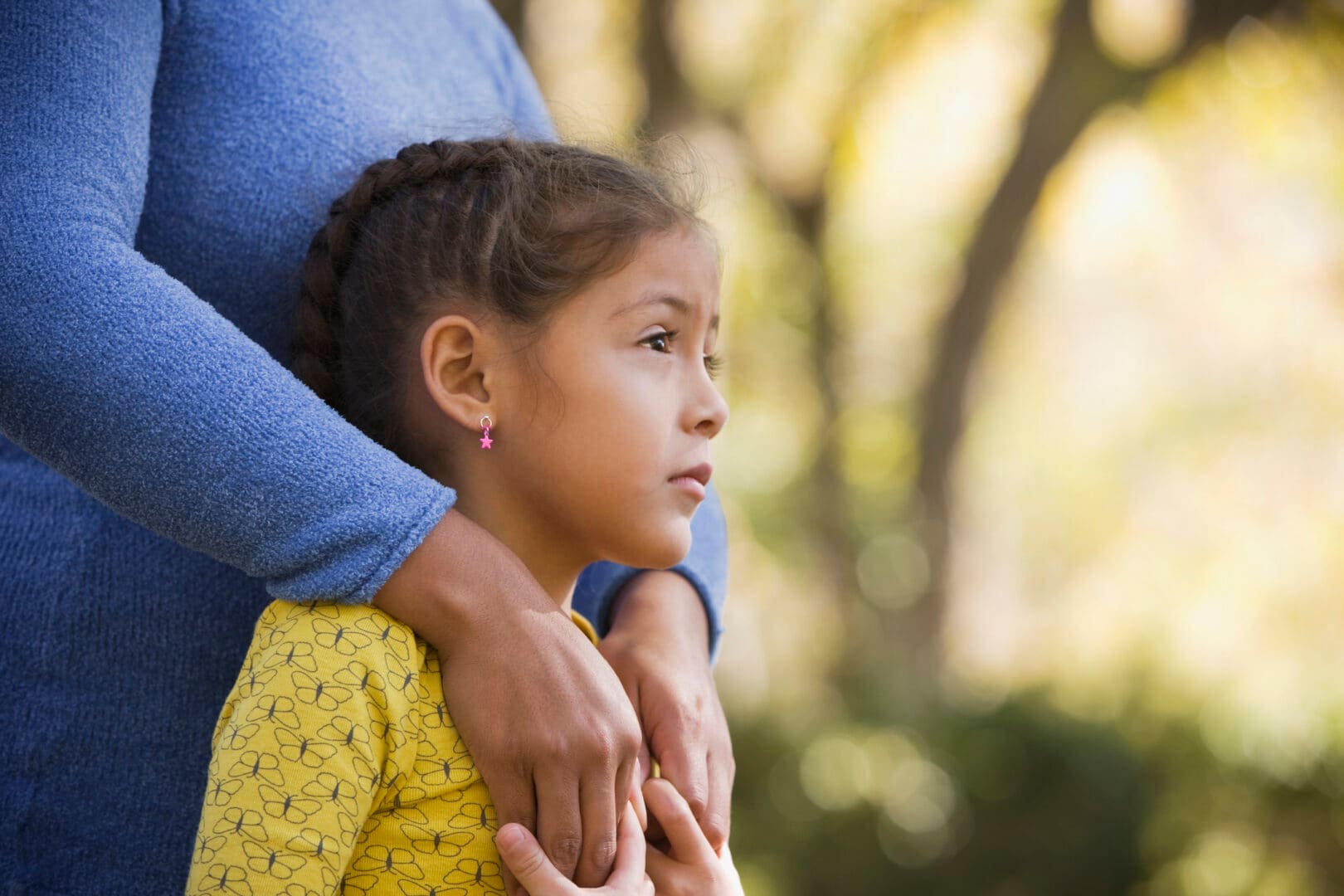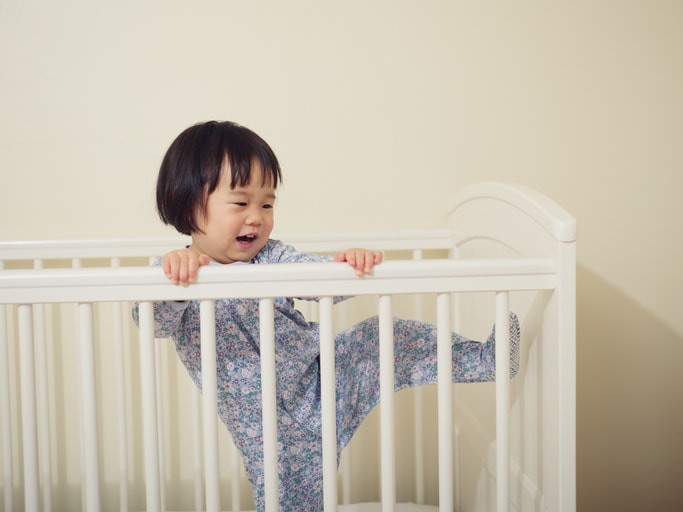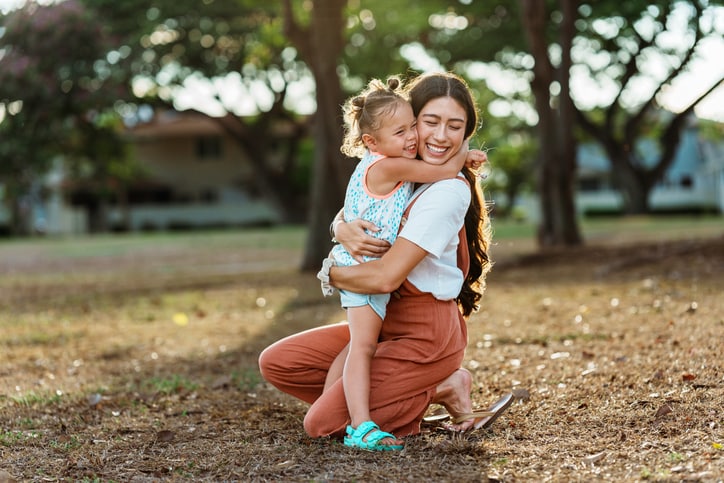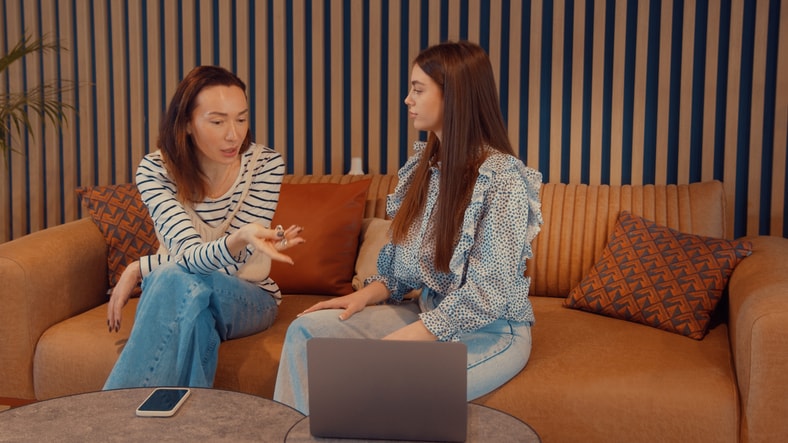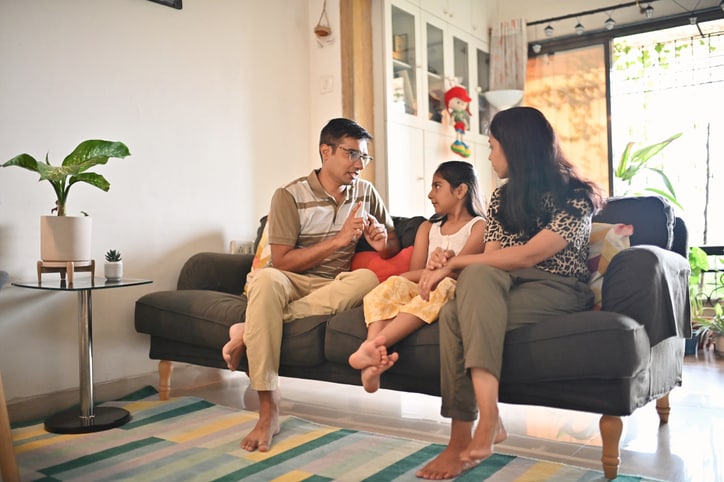Many children do not remember a time before a pervasive atmosphere of anxiety. The COVID pandemic, school shootings, racial inequity, anti-Asian hate crimes, the war in Ukraine and climate change are all major anxiety-inducing factors on top of regular life stressors for kids.
By 2019, nearly 6 million U.S. children ages 3-17, or over 9%, were already reported to live with anxiety by the Centers for Disease Control and Prevention (CDC). That was before the pandemic hit. The numbers have since increased, with an unprecedented number of children experiencing anxiety, particularly in younger children.
“Childhood and adolescence are the main risk periods for developing anxiety, with a higher frequency in females,” says Dr. Nehal Thakkar, a pediatric hospitalist at Phoenix Children’s Hospital.
“Childhood and adolescence are the main risk periods for developing anxiety, with a higher frequency in females.”
— DR. NEHAL THAKKAR, PEDIATRIC HOSPITALIST
Parents and caretakers are living in the same atmosphere of anxiety. The struggle to strike a balance between raising socially aware children while trying to protect them can feel impossible. Experts and parents with lived experience weigh in on identifying anxiety in kids and when to seek help.
What are signs of anxiety in kids?
Anxiety symptoms in children may be very obvious from a young age, or they may be more subtle.
“Our daughter started asking a lot of questions that had to do with her health and safety,” says Lauren Wellbank, a mother of three from Lehigh Valley, Pennsylvania. “At first, it seemed normal, like she’d touch something gross and then come ask us if she was going to be OK. But then she started asking if she was going to be OK after she would come into contact with anything … Then she started compulsively washing her hands.”
Chona O’Galvin, a mom of two from Virginia Beach, Virginia, first believed her son was prone to extreme shyness until he increasingly began to exhibit traits from an anxiety checklist she came across, which included perfectionism, pessimism, procrastination and more.
“Some common signs of anxiety,” says Dr. Jessica L. Fealy, an assistant professor of general pediatrics at Michigan Medicine, “may be difficulty sleeping, difficulty separating from main caregivers, difficulty with new experiences, nervousness or dislike of certain sensory experiences (certain clothes, loud noises, crowded/busy environments, new foods), fear of failure or specific phobias.”
“Other signs of anxiety,” adds Fealy, “can be more physical like stomach aches, vomiting/diarrhea, headaches, unexplained aches and pains and asking to come home from school frequently.”
She explains that for some kids, anxiety will present as ‘meltdowns’ often with their most comfortable adults. “[Children] work so hard to hold it together during the day that sometimes it may seem like the smallest thing sets them off … and they may seem to overreact to small stressors.”
Signs of anxiety in children will vary by case. Thakkar notes anxiety symptoms can change over time and with age. She says young children may exhibit clinginess or regressions like bedwetting while older children may avoid situations and people, experience panic attacks in the form of heart pounding, trouble breathing, sweating, shaking or dizziness.
Non-specific pains and symptoms, such as headaches, abdominal pain, changes in bowel habits, rashes or other changes related to their mind-body connection may also appear.
Signs of anxiety in kids may include:
- Difficulty sleeping.
- Clinginess/difficulty separating from main caregivers or regressions, like bedwetting.
- Difficulty with new experiences or avoidance of certain situations and people.
- Nervousness or dislike of certain sensory experiences (certain clothes, loud noises, crowded/busy environments, new foods).
- Fear of failure and more specific phobias.
- Meltdowns or panic attacks in the form of heart pounding, trouble breathing, sweating, shaking or dizziness.
- Non-specific pains and symptoms, such as headaches, abdominal pain, changes in bowel habits, rashes or other mind-body changes.
How early can a child show signs of anxiety?
“Children can show signs of anxiety as young as 1 to 2 years old,” says Fealy. “Some parents of anxious kids will recall that as infants they were difficult to soothe or struggled with separating from caregivers or new experiences; but it’s important to remember that these are also normal things that infants work through, and they’re not always a sign of anxiety.”
“Children can show signs of anxiety as young as 1 to 2 years old.”
— DR. JESSICA L. FEALY, ASSISTANT PROFESSOR OF GENERAL PEDIATRICS
The CDC reports anxiety in less than 2% of children ages 3-5, over 6% of children ages 6-11, and over 10% in children ages 12-17.
“As a pediatrician, I see patients who present for anxiety most in school-aged children and adolescents,” Fealy adds. She goes on to explain that often parents describe earlier signs in their kids they’ve worked through at home before getting to the point where the anxiety level came to interfere with everyday functioning, which necessitated professional help.
What triggers anxiety in kids?
Though anxiety can manifest any time, it tends to occur during big changes or stressors. “The pandemic and the lifestyle upheaval has been a big trigger,” says Fealy, who is also a mother of a child with anxiety. She adds that the return to in-person school for some children who struggle to separate from their parents has also been a challenge. “A move, a new school, more stressful academic demands, new activities, a death in the family,” Fealy says, “can all exacerbate anxiety.”
“A move, a new school, more stressful academic demands, new activities, a death in the family can all exacerbate anxiety.”
— DR. JESSICA L. FEALY, ASSISTANT PROFESSOR OF GENERAL PEDIATRICS
In addition, kids can develop specific phobias to animals and insects, injections or loud noises usually up to age 12. “As children grow, social phobias and performance-related or school anxiety can develop,” explains Thakkar.
Genetics and environmental factors, including the mental health of caregivers and childhood adversity, also increase the risk of anxiety in children.
When is it time to seek help for my child’s anxiety?
Fealy recommends treating anxiety when it begins to interfere with the family’s everyday functioning — for example, if you can’t get to school or work because a child can’t separate, if a child can’t participate in new activities or enjoy time with friends, if the child can’t try new foods or experiences because of a phobia or if no one is sleeping because a kid can’t fall asleep.
“When children are experiencing anxiety, they may also have a hard time concentrating, be fidgety or be extremely self-conscious or critical of themselves,” says Michelle Felder, a licensed clinical social worker, play therapist and founder of Parenting Pathfinders, based in New York City. “If a child’s fearful thoughts are becoming uncontrollable and intrusive, if their worries are impacting the things that they do day-to-day or if your child is avoiding certain situations because of their anxiety, it’s time to connect with a mental health professional in your area for support.”
“If a child’s fearful thoughts are becoming uncontrollable and intrusive, if their worries are impacting the things that they do day-to-day or if your child is avoiding certain situations because of their anxiety, it’s time to connect with a mental health professional in your area for support.”
— MICHELLE FELDER, LICENSED CLINICAL SOCIAL WORKER
“It wasn’t until my son started his sixth grade year during the pandemic and was attending virtual school that I realized his anxiety was beyond anything my husband or I could handle,” says O’Galvin. “He really needed professional help. The transition from elementary school to middle school is hard to begin with, but the pandemic/virtual learning compounded it tenfold…”
Virtual learning was incredibly draining and stressful for O’Galvin’s son, who struggled with being on camera. “He started having panic attacks and meltdowns whenever he had to introduce himself, present something during breakout rooms or just speak on camera where all eyes were on him.”
O’Galvin explained that her son would become overwhelmed by assignments because he wouldn’t know where to start. “He would get frustrated and start crying, worried he would fail his classes.”
The now 13-year-old brought up his anxiety issues with his pediatrician during his annual well check visit. After the doctor performed a screening with him, she advised the family to contact a behavioral therapist to work with him on what she suspected to be general and social anxiety.
“Anxiety can go unrecognized and underdiagnosed in children, making it harder to treat and manage,” says Thakkar. “If you’re noticing any atypical behaviors or other changes in your child, it is always important to discuss them with your pediatrician.”
How to overcome the stigma around anxiety — and why it’s critical we do
“Dealing with my child’s mental well-being has been an ongoing journey,” says O’Galvin. “It’s been so important to check myself of any biases or preconceived notions so that I don’t pass judgment or project negativity over something he’s emotionally working through.”
Thakkar also stresses the importance of removing stigma around anxiety and other mental health conditions. “Teach your child to recognize these signs in themselves and to ask for help when they need it,” she says. “Remind your child that mental health is just as important as physical health — you take them to the doctor when they are physically ill, so it’s just as important to get help or see a provider for your mental health too.”
